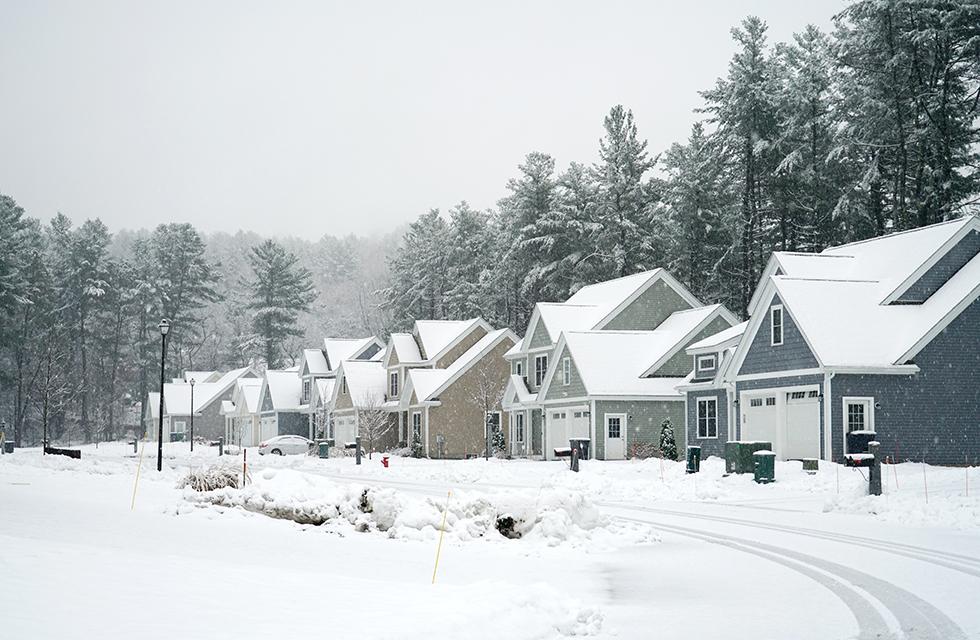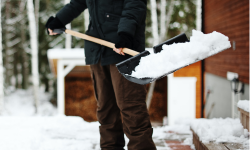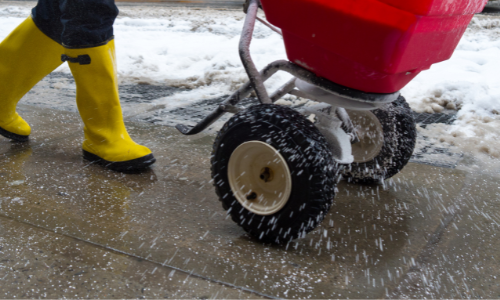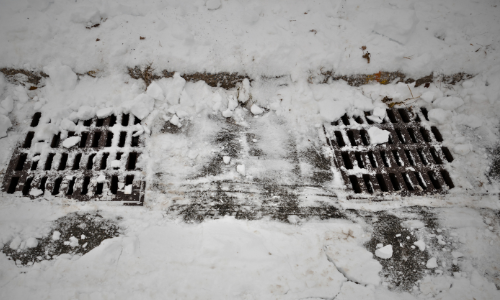Winter Salt Smart

DID YOU KNOW?
It only takes one teaspoon of salt to permanently pollute five gallons of water. While we want all of our community member to be able to walk and drive around the county safely, we also want to make sure the environment is adequately protected from contamination.

Prince William County is a proud partner of the Clean Water Partnership's Winter Salt Smart initiative. The County has joined Northern Virginia Regional Commission (NRVC) and Metropolitan Washington Council of Governments (MWCOG) to help ensure community members are provided with useful winter salt management practices to help prevent winter stormwater runoff from contaminating local waterways.
Since there are no easy or cheap ways to remove salt from the environment, the County is dedicated to sharing salt management tips that will help mitigate polluted stormwater runoff from entering the environment, while maintaining public safety.
When purchasing salts for the winter season it is important to always check product ingredients. Labels such as “safe,” “pet-safe” and “environmentally-friendly” are sometimes used inaccurately.
Also, be aware that all nitrogen and phosphorus salts are illegal in Virginia. Nitrogen salts include urea, ammonium sulfate, and potassium nitrate, etc. Phosphorus salts may have “phosphate” (PO4) in the ingredients, although these are rare.
When applying salt to your driveway or sidewalk, choose a product based on the Lowest Practical Melting Temperature, not the Eutectic Temperature.
- Image

-
Clear snow by shoveling early and often.
-
Make sure to clear snow and apply salt only where needed.
-
Be patient and give the salt time to work. The colder it is, the longer it will take for the salt to melt what snow or ice remains after shoveling.
-
Never use salt to “burn off” snow. It will quickly dilute and requires excess use.
-
If the sun comes out and you can wait, let the sun do some of the work before you apply salt.
-
After the storm, sweep up the extra salt or traction material and use it again next time winter weather hits.
-

DRINKING WATER
Rising salt levels in drinking water (including private wells and reservoirs), affect human health if levels get too high. Chloride can also erode pipes, releasing metals into drinking water.
HEALTH & WELLNESS
High sodium levels can even affect those on low sodium diets (e.g., with heart disease, high blood pressure, or metabolic and renal disorders).- Image

- To make it easier on your back, you can choose shovel products with wheels.
-
Remember to take breaks and avoid overloading your shovel with wet snow.
-
For big storms or heavy weight snow, snow blowers may also be helpful.
-
Always make sure to assemble an emergency or storm preparedness kit.
-
Have your salt and traction materials ready and be sure to store them away for rain and snow!

HOUSEHOLD PETS
Some winter salts can irritate your pet's paws and cause chemical burns. If ingested by your pet it can cause mouth burns and gastrointestinal problems such as vomiting and diarrhea. If you have a household pet either find alternatives to salt, select pet safe salt or protect their paws with booties.
ENVIRONMENT & WILDLIFE
Because rivers, streams and lakes are vital to ecosystem of plants and animals salt contamination can cause deadly effects on plants and wildlife.- Image

-
Sodium chloride: One 12-oz coffee mug holds enough salt to treat a 20-foot driveway or ten sidewalk squares. Aim for about 3 inches between pieces of rock salt.
-
Calcium chloride: Apply at a rate that is one third of the rate used for sodium chloride.
-
If it is too cold for salt to work, or you'd rather not use salt, consider using other traction materials. These include sand, bird seed (make sure to use a native blend), wood ash, and zeolite crystals (like EcoTractionTM).
-
Be patient and give the salt time to work. The colder it is, the longer it will take for the salt to melt what snow or ice remains after shoveling.
-

INFRASTRUCTURE & PROPERTY
High salt levels can cause infrastructures such as bridges, guardrails and pavement to rust and corrode away. Personal and business vehicles may also be susceptible to corrosion.
FISH & AQUATIC LIFE
High salt levels can be harmful to freshwater fish and other aquatic life in streams and lakes. Some salts may even be considered hazardous to saltwater aquatic life due to chemicals in the melt.
The "Winter Salt Smart" initiative is a part of Northern Virginia Regional Commission's Salt Management Strategy (SaMS), which coordinates with multiple municipalities across the Metropolitan Council of Governments and affiliated state agencies and non-profits to help improve salt management practices while maintaining public safety.
To Learn more about SaMS, review their Toolkit and outreach resources.
|
|
|